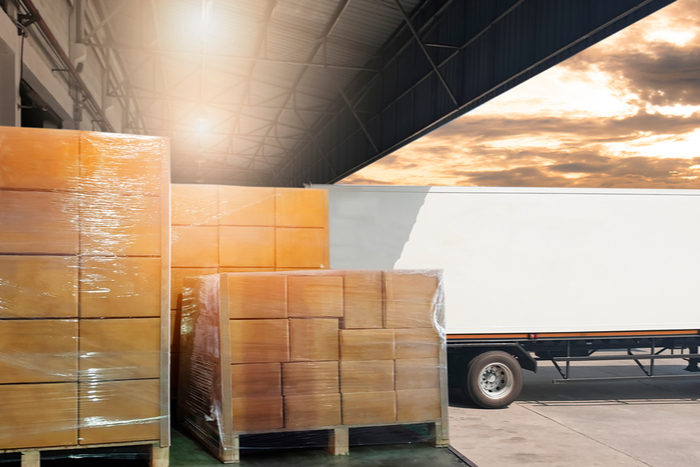
Greater education, training, and “due diligence” are needed to smooth issues around electronic delivery receipts for LTL shipments, speakers told the T&LC webinar. Photo credit: Shutterstock.com.
The proliferation of “no-touch” pickups and deliveries during the COVID-19 pandemic is leading to an increase in disputes over less-than-truckload (LTL) shortage and damage claims, speakers and attendees at a Transportation & Logistics Council webinar said Wednesday.
The problem points to the need for greater education, training, and cooperation among shippers and their suppliers, vendors, carriers, and brokers, the speakers said. As more receipts and bills of lading are digitized, the issue won’t go away.
“The digital delivery receipt is becoming a norm now,” said Nikhil Sathe, managing director of Logisyn Advisors, a consulting firm that focuses on logistics merger and acquisition activity. “Digitization has become more rapid in the last 10 months and this isn’t going to change.”
What has changed, shippers in the online audience said, is the number of loading docks and warehouses that will not let truck drivers count the shipment before it is loaded, or even let them near the docks. They also said drivers are not providing shipment counts on delivery.
“A lot of the warehouses out there are no longer allowing the truckers on the dock,” one shipper at the webinar said. Some customers are pushing back when carriers refuse claims, even when “the carrier couldn’t verify count or condition prior to loading,” she said.
“That’s especially true for warehouses that have always allowed the carriers on the dock and now suddenly, because of COVID, they do not,” she said. “Most of our customers are understanding. However, we have a few who think it is used as an excuse to deny a claim.”
No easy fixes
Shippers at the webinar also complained that some LTL drivers not allowed on docks are requesting delivery receipts be signed by consignees before a load has been counted or inspected. A shortage or damage is only discovered after they’ve left, and claims denied.
“They just ask for a person's name, put the person's name down [on their receipt], and walk out the door,” one consignee said.
But that’s not acceptable behavior, according to an LTL carrier that spoke with JOC.com after the webinar. “We always do a count at pickup and with the receiver at delivery,” the carrier said.
“What we’re doing at delivery is counting the load and letting the customer count as well,” the LTL source said, noting that load counts can still be performed while social distancing. “What we’re not doing is giving them a pen. We’re just saying, ‘Can we agree it’s 12 boxes?’ And we write down 12.”
There’s no easy fix for these issues, except for attention to detail and insistence on correct procedures, speakers at the event said. “I think that shippers and brokers just need to do their due diligence,” said Henry E. Seaton, a transportation attorney with law firm Seaton & Husk.
“If they can introduce evidence that says, ‘Look, from the time he bumped our dock until we discovered [the shortage or damage] was less than 30 minutes, you’ve got the best of the argument,” said Seaton. “If you wait until four months later, that’s a different thing.”
Consignees, of course, could refuse shipments unless they are allowed to count or inspect freight before signing a receipt, although their ability to refuse may be clearer in theory than on a busy loading dock. When truck drivers are not able to count a load at a dock, they need to mark the bill SL&C (shipper load and count) to make it clear they were not able to verify the count.
The increased use of digital receipts and other e-documents will bring further changes, Geoff Muessig, chief marketing officer of regional LTL carrier Pitt Ohio, said in an interview. When it comes to signatures, the LTL sector is on the same track as parcel carriers, he said.
“The need for a signature will be based on the street value of the goods,” Muessig said. “The need for signatures is obviously more important with high-value goods.” Parcel shippers pay more to send packages that require customer signatures to prove receipt, he noted.
“Shippers are going to pay more for these signatures, and they’re going to have to ask what’s the value in these signatures,” Muessig said. Increasingly, digital information submitted by a shipper to the carrier will be the basis for the “contract of record ... not the paperwork,” he said.
Contact William B. Cassidy at bill.cassidy@ihsmarkit.com and follow him on Twitter: @willbcassidy.
"load" - Google News
February 26, 2021 at 01:44AM
https://ift.tt/37NZ4Zw
Trucking: Shippers, LTL carriers clash over load counts: T&LC - JOC.com
"load" - Google News
https://ift.tt/2SURvcJ
https://ift.tt/3bWWEYd
Bagikan Berita Ini














0 Response to "Trucking: Shippers, LTL carriers clash over load counts: T&LC - JOC.com"
Post a Comment